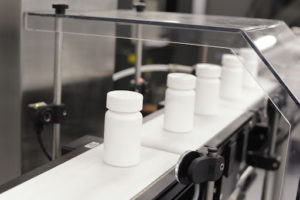What Is Pharmaceutical Processing?
Pharmaceutical processing is the process of making drugs which can be broken down into a number of different unit processes including blending, granulation, milling, coating, tablet pressing, filling and so on. In terms of quality, the pharmaceutical manufacturing process includes certain standards and production norms. As a consequence, pharmaceutical production equipment must adhere to industry standards.
Pharmaceutical process development refers to the whole process of developing medications, from research and development through laboratory formulation to commercial manufacturing.
Pharmaceutical Production
Since health is a critical social and economic asset, infectious and non-communicable illnesses both represent a significant danger to people’s well-being and prosperity. Quality is essential in the pharmaceutical product development process — cutting-edge research, comprehensive methods, and flawless goods are what set pharmaceutical businesses apart. New illnesses need new treatments, and increasing competitiveness necessitates quicker, leaner procedures across the board.
 Pharmaceutical Manufacturing Processes
Pharmaceutical Manufacturing Processes
The pharmaceutical production process is usually made up of a number of different unit procedures, selected on the physical and chemical properties of the active medicinal component.
- Dry granulation is the process of compacting a low-density powder into granules. A mixture of screw feed, compaction, and milling technologies is used in the roller compaction process.
- Powder blending. A variety of excipients may be combined to make the final blend that is utilized to make a solid dosage form. Because each medicine composition is unique, no two blending procedures can be exactly the same.
- Wet granulation and high shear granulation are two common procedures for densification, improving flowability, content homogeneity, wettability and dispensing characteristics.
- Top spray, bottom spray (Wurster) and rotary (tangential spray) in the food and pharmaceutical sectors.
- Hot-melt extrusion (HME) is a method of pharmaceutical manufacturing that allows medications with low solubility and bioavailability to be delivered. The use of HME to disperse active pharmaceutical ingredients (APIs) in a matrix at the molecular level (generating solid solutions) is of special interest.
- Drying. Many pharmaceutical operations rely on knowing and regulating the moisture content of powders. The physical and chemical properties of powder and granules are affected by drying conditions such as the fluid bed or laminar flow.
- Pharmaceutical milling removes materials from a workpiece using rotary cutters in pharmaceutical equipment machinery by feeding in at an angle to the tool’s axis.
- Compression of powder or granules into tablets is a quick, easy way to make a solid dosage medicine.
- Batch process coating pans, off-press continuous coating, and continuous processing are all options for tablet coating equipment.
- Encapsulation of a solid or liquid dosage of a medicine in a softshell (or hard pre-formed capsule).
- Micronization is the process of shrinking the particle sizes of pharmaceutical goods under very high pressures through shearing, turbulence, acceleration, and impact to make them more stable and therapeutically effective.
More information about the drug product manufacturing process can be obtained online at rondaxe.com or by calling us at (315) 469-2800.
< Previous | Home | Next >

